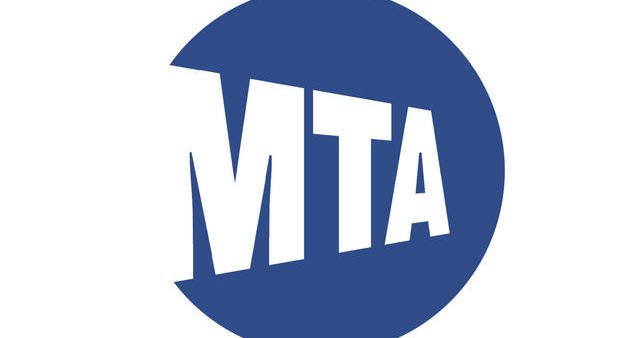Cost-Containment Cuts Projected Fare and Toll Increases by Almost Half; Budget Growth Held to Less Than 2%; MTA Invests in Future as Financial Risks Remain.
New York, NY - November 13th, 2013 -The Metropolitan Transportation Authority (MTA) today released its Final Proposed 2014 Budget and Four-Year Financial Plan. The plan includes the addition of new cost reduction measures and recognizes favorable operating results and tax revenue re-estimates that have taken place since the preliminary budget was released in July. The MTA expects that the combination of increased cost cutting, lower expenses and higher operating revenues will allow the agency to reduce by almost half the previously projected fare and toll increases scheduled for 2015 and 2017.
Increasing Success in MTA Cost Savings Initiatives
The plan released today limits the growth of expenses in 2014 to 1.96%, in line with the rate of inflation. The MTA’s improved cost containment will allow the MTA to increase savings goals by $200 million per year by 2017 from initiatives such as further administrative consolidations, workers compensation efficiencies, energy efficiencies and additional efficiencies in procurement and inventory control. Many MTA expenses have been on long-term growth trajectories well in excess of the rate of inflation. They include employee health and welfare costs, pensions, paratransit operations, and debt service. In this plan, the MTA continues to restrain the growth of these costs.
“We try to keep costs down in order to minimize the financial burden on our customers, and as this financial plan shows, we are succeeding in that effort,” said MTA Chairman and CEO Thomas F. Prendergast. “Our customers want value, which is quality and quantity of service, and that service has to be reliable and safe. Through this financial plan, that’s what we work to provide.”
Fare Increases Reduced by Almost Half
As a result of improved MTA cost cutting and increased tax and operational revenue, the MTA anticipates that the previously announced 2015 and 2017 fare and toll increases would be designed to yield an increase of 4%. This amount is almost half of the 7.5% yields that had been previously projected.
Funding Included for Service Increases, Increased Support for the Capital Program and Under-Funded Pension and Health Care Liabilities
The plan provides $18 million in funding for service investments proposed last July, $11.5 million in increased service to meet loading and headway guidelines, and $11 million in additional customer enhancements. Service improvements include:
-
Extending the M from Myrtle Avenue to Delancey Street -Essex Street on Weekend
-
Extending Bx24 to Hutchinson Metro Center from Westchester Square
-
Adding Q77 service on Sundays
-
Restoring Q31 on Weekends
-
Restructuring Staten Island express bus service to add a new “super express” service via the Lincoln Tunnel to Midtown
-
Restoring half-hourly LIRR weekend service on the Port Washington Branch and creating half-hourly weekend service to Ronkonkoma during high volume weekend travel periods, which began in September
-
Expanding LIRR service to Greenport through Thanksgiving weekend
The plan increases the annual “pay-as-you-go” funding for the MTA Capital Program by an additional $40 million a year on top of the $80 million increase included in the July Plan, for a total of $370 million a year beginning in 2015. This will serve as a “down payment” for the 2015-2019 Capital Program, potentially providing as much as $6.5 billion of funding.
Prudent additional investments are being made to pay down unfunded pension and health and welfare liabilities. The plan captures the $80 million investment that was made this year to reduce the LIRR’s unfunded pension liability, and makes additional investments beginning this year to further reduce the MTA’s unfunded pension liabilities. Because every dollar invested in the unfunded pension obligation results in a 7% return every year, these investments will result in annual recurring savings that grow to over $22 million by the end of the four year plan period, with increased savings thereafter.
The plan also increases the contributions to fund “Other Post-Employment Benefits” (OPEB), primarily healthcare costs for current and future retirees. The MTA has an unfunded liability of $17.8 billion, and the New York State Comptroller has strongly encouraged governments and authorities to recognize these expenses and to set aside funds in trust to meet this obligation. Based upon the projected contributions during the Plan Period, the amount held in the MTA’s OPEB Trust and OPEB Reserve accounts is expected to exceed $1.1 billion by 2017.
Risks Remain
The finances of the MTA are highly dependent on the health of the regional economy; despite an improved outlook, economic significant risks remain. The plan also assumes that labor agreements that are currently open will be settled with three years of net-zero wage growth. The failure to achieve this desired settlement would increase costs by approximately $300 million per year going forward. To achieve net zero, wage increases may be granted if they are offset by savings from work rules or other non-wage concessions. The State’s largest unions last year agreed to contracts that include three years of zero wage increases as well as contributions towards health care benefits.
The plan also assumes that State budget actions will reflect full remittance to the MTA of all funds collected on its behalf. While the State has been successful in the face of challenges to the Payroll Mobility Tax, which benefits the MTA, any modifications to this tax could adversely affect this vital MTA revenue stream.
Using information presented today, the MTA Board will vote in December on whether to adopt the Final 2014 Budget and Four-Year Financial Plan.










